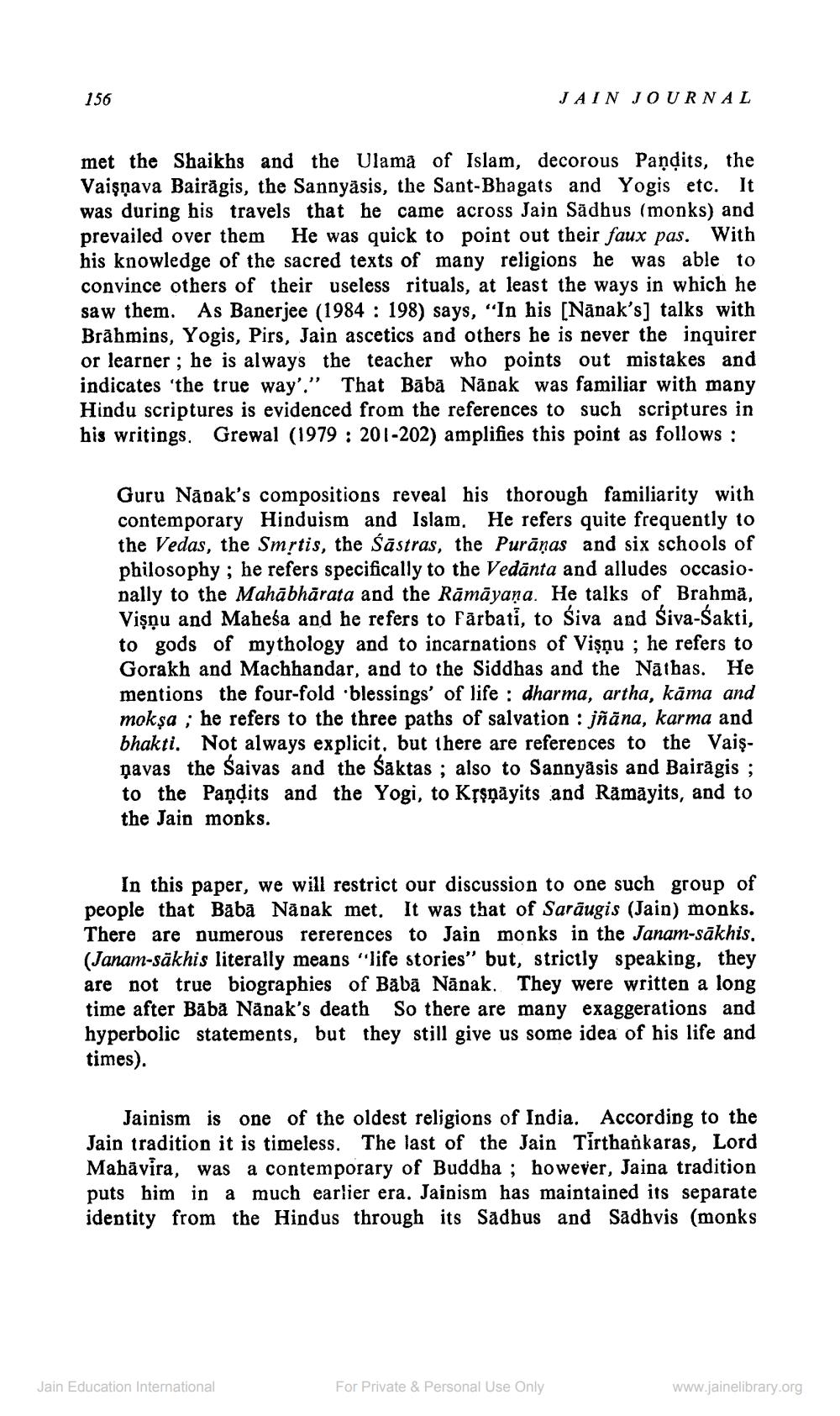________________
156
JAIN JOURNAL
met the Shaikhs and the Ulama of Islam, decorous Pandits, the Vaisnava Bairagis, the Sannyasis, the Sant-Bhagats and Yogis etc. It was during his travels that he came across Jain Sãdhus (monks) and prevailed over them He was quick to point out their faux pas. With his knowledge of the sacred texts of many religions he was able to convince others of their useless rituals, at least the ways in which he saw them. As Banerjee (1984 : 198) says, “In his [Nānak's] talks with Brāhmins, Yogis, Pirs, Jain ascetics and others he is never the inquirer or learner; he is always the teacher who points out mistakes and indicates 'the true way'.” That Bābā Nāpak was familiar with many Hindu scriptures is evidenced from the references to such scriptures ir his writings. Grewal (1979 : 201-202) amplifies this point as follows :
Guru Nanak's compositions reveal his thorough familiarity with contemporary Hinduism and Islam. He refers quite frequently to the Vedas, the Smrtis, the Šāstras, the Purāņas and six schools of philosophy; he refers specifically to the Vedānta and alludes occasionally to the Mahābhārata and the Rāmāyana. He talks of Brahma, Vişņu and Mahesa and he refers to fārbati, to Śiva and Siva-Sakti, to gods of mythology and to incarnations of Vişņu ; he refers to Gorakh and Machhandar, and to the Siddhas and the Nathas. He mentions the four-fold .blessings' of life : dharma, artha, kāma and mokşa ; he refers to the three paths of salvation : jñāna, karma and bhakti. Not always explicit, but there are references to the Vaişpavas the Saivas and the Śaktas ; also to Sannyasis and Bairāgis ; to the Paņdits and the Yogi, to Krşņāyits and Rāmāyits, and to the Jain monks.
In this paper, we will restrict our discussion to one such group of people that Baba Năpak met. It was that of Sarāugis (Jain) monks. There are numerous rererences to Jain monks in the Janam-sākhis. (Janam-sākhis literally means "life stories" but, strictly speaking, they are not true biographies of Babā Nānak. They were written a long time after Baba Nanak's death So there are many exaggerations and hyperbolic statements, but they still give us some idea of his life and times).
Jainism is one of the oldest religions of India. According to the Jain tradition it is timeless. The last of the Jain Tirthankaras, Lord Mahāvira, was a contemporary of Buddha; however, Jaina tradition puts him in a much earlier era. Jainism has maintained its separate identity from the Hindus through its Sadhus and Sadhvis (monks
Jain Education International
For Private & Personal Use Only
www.jainelibrary.org




